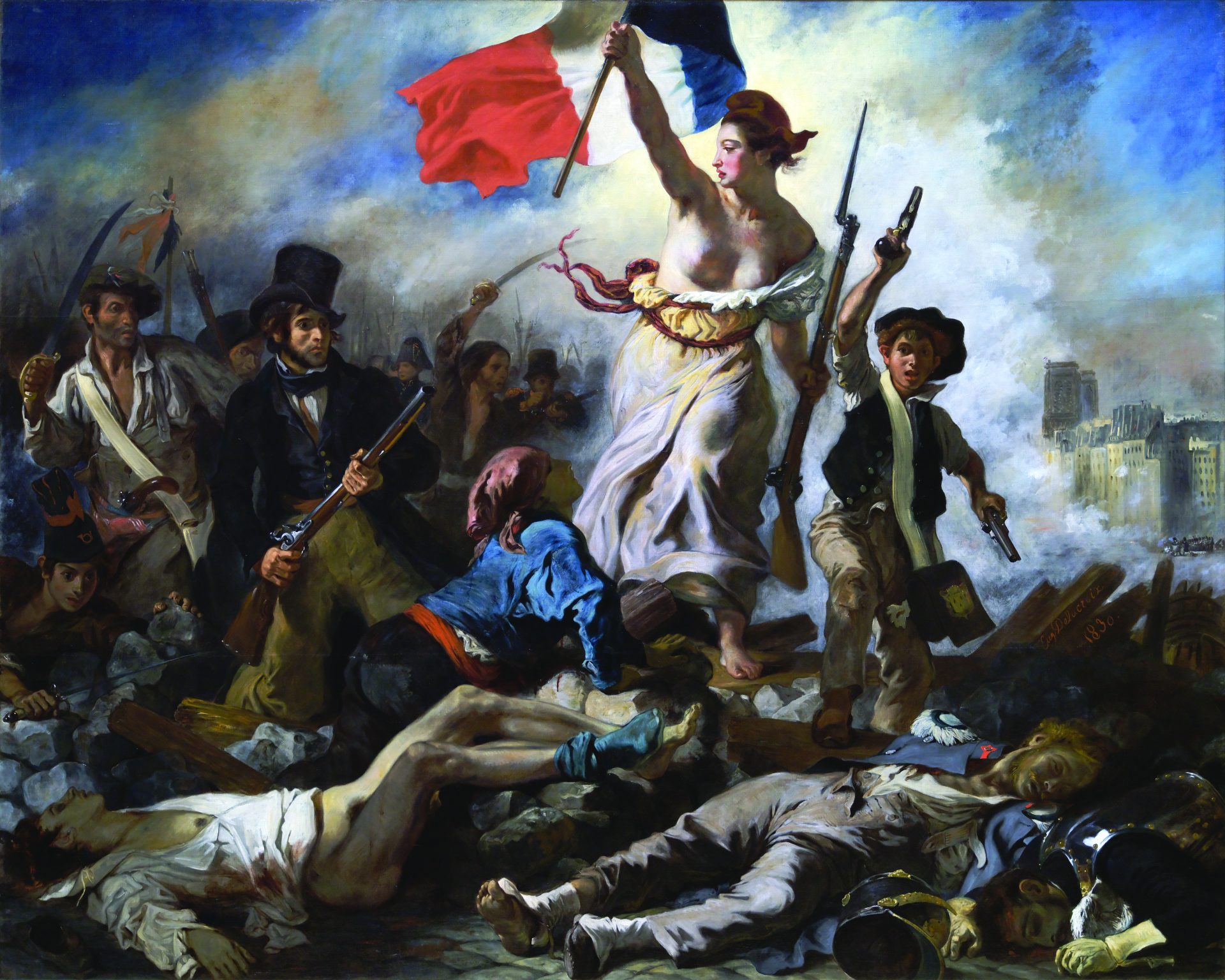
For most readers (perhaps users would be a better word) of Chronic City, there will come a moment when they’re forced to admit that what they have in their hands is a stoner book, with all that implies, good and bad. On the most basic level, the title gives it away. Lethem’s New York is a sick city, suffering from physical disintegration and advanced dope psychosis. Everything seems connected to everything else, each wacky allusion, each comically dense situation, weaving baroque tangles of interrelation, until reader, writer, and characters all realize they’re trapped in a forest of signs and will freak out unless they raid the fridge.
It’s not simply that most of the characters are constantly wasted, or even that a key narrative device involves a stranded space station called Northern Lights. The truly stoned quality of this book resides (like proverbial worlds within grains of sand) in the details. Take the names of the astronauts stuck in orbit. Trumbull? Zamyatin? As in Douglas, the special-effects director of 2001: A Space Odyssey, and Yevgeny, the Russian author of the dystopian fable We? These are fan references, knowing Freemasonic winks to other basement dwellers, people who, like Lethem’s characters, know the names of obscure psychedelic-folk guitarists and between bong hits enjoy disquisitions on the uncertain ontological status of Marlon Brando. Google the rest of the crew, and sure enough, one uncovers a tip of the hat to Mstislav Keldysh, the “chief theoretician” of the Soviet space program. That just leaves Sledge, the reclusive space gardener. Could we be meant to think of Percy, ’60s crooner of “When a Man Loves a Woman”? Sure, that connects, because everything’s connected, and besides, there’s a romantic story line here. Is that the answer? What other sledges are there out in the mediaverse? Rosebud, in Citizen Kane? Peter Gabriel’s “Sledgehammer”? There are any number of these rabbit holes to dive down in Chronic City, and only when you realize that you’ve just spent ten minutes wondering whether the phrase “he’d give up all his comfort / sleep out in the rain” is in any way significant can you accept how fully the book is committed not merely to the culture but to the recursive, Mandelbrot-set logic of dope smoking.
The book’s likable antihero, an ineffectual former child star called Chase Insteadman (Lethem’s been to the Thomas Pynchon School of Overdetermined Character Naming), is a fixture on Manhattan’s social scene, because everyone is fascinated by his stoic fidelity to Janice Trumbull, an American astronaut aboard the aforementioned Russian space station. Janice writes touching open letters, devoured by the city’s newspaper-reading public, describing the crew’s doomed struggle to survive, cut off from home by “Chinese mines” strewn in Low Earth Orbit. As Chase drifts through the drawing rooms of the Upper East Side, he wryly scrutinizes his rich hosts, men who “shifted the money around, trying to make it get bigger,” but seem like “peons” next to their socialite wives. Indeed, a mysterious gray fog has enveloped the financial district, and through this miasma these figures trudge, once Tom Wolfe’s “masters of the universe,” now “effortful and exhausted.” Though this is an alternate-world Manhattan, whose citizens fondly remember the “Gnuppets” and listen to “Cthonic Youth,” the year is definitely 2008.
The financial crisis is important to Lethem’s diagnosis of the city’s malaise, and he throws a lot of metaphors at the wall to make his point. The fog, perhaps a descendent of the moral and legal pea-souper that opens Bleak House, or of the “airborne toxic event” used to such unsettling effect in Don DeLillo’s White Noise, is only one among many. Lethem’s Manhattan is a place of collapsing buildings, and its paradigmatic cultural figure, the conceptual artist Laird Noteless, makes art out of emptiness, digging chasms and voids like a bad-vibe Robert Smithson.
A suspicion takes hold among Chase’s cabal of smoking buddies that the whole city is a simulacrum, “a fake, a bad dream.” The theory develops because of their communal fascination with bidding on eBay for “chaldrons,” mysterious objects that appear to be ceramics of inestimable value, imbued with a beauty and purity that make them almost transcendentally desirable. This is especially the case if one has been smoking ICE, a potent brand of skunk and no doubt also a nod to Anna Kavan, perhaps to William Gibson, incorporating a bathetic joke on Philip K. Dick’s “Substance D” . . . Oh, sorry, where was I? Zoned out for a moment there. “The chaldron interrogated Manhattan, made it seem an enactment . . . likely we’d lost the auction because one couldn’t be imported here, to this debauched and insupportable city.” Questions of value, monetary and otherwise, float around in Chronic City, but despite the drumbeat of apocalypse, there’s no real sense of crisis (if so, Lethem would presumably have called it Acute City) or much in the way of analysis, let alone anger at the reckless greed behind it all. No one seems to suffer. No one seems to be to blame. The financial collapse is just fog, bad weather, another ailment racking the city’s pox-riddled body. Likewise there’s a stab at a critique of gentrification, which never gets much beyond noting that one of Chase’s gang (Richard Abneg, geddit?), once part of the Lower East Side squatting scene, is mistily nostalgic for the Tompkins Square Park riots but now works for the Bloombergian mayor, Jules Arnheim.
At times, Chronic City is almost a caricature of the type of writing James Wood skewered as “hysterical realism.” The irritating names, the hyperactive plotting, the relative lack of interest in psychology, and the general atmosphere of conspiracy and connectivity are all hallmarks of a genre that (pace Wood) vastly expanded the possibilities of the postwar novel but has now ossified into a repertoire of gestures, most of which Chronic City seems compelled to repeat. The boho Trivial Pursuit games Lethem plays are, I think, evidence that he knows he’s writing belatedly and wants us to know he knows—the true fan’s anxiety at being mistaken for an outsider, a square who doesn’t get the gag. The compulsiveness of this referentiality suggests the book may be a conscious tribute of some kind, a love letter to the writing that inspired Lethem to become a writer. His own well-documented fandom has informed his fiction from the outset. His early novels, written under the sign of Philip K. Dick (whose work he’s brilliantly edited for the Library of America), were succeeded by fiction that was accepted by the literary mainstream while retaining an underpinning of genre conventions, mostly from hard-boiled noir and science fiction. His best-regarded book, The Fortress of Solitude (2003), plays games with superhero tropes and has at its heart that most über of überfans, a rock critic. And much of Chronic City turns on Chase’s relationship with the reclusive critic Perkus Tooth, a familiar hysterical-realist type—a full-time generator of cultural connections, whose various obsessions (among them a hatred of rock critics) allow the writer to riff entertainingly on everything from alternative medicine to Malcolm Gladwell and “the commodification of whim.”
This is to say that Lethem has no problem with genre as such, and his writing gleefully (ab)uses it as a tool to lever open “important” literary themes. If his own canon (Burroughs, Chandler, Dick, Pynchon, Barth, Ballard, Auster, Marvel Comics) is worn proudly, like band buttons on a jacket, it’s clear he’s not terribly interested in the kind of muted psychological realism that characterizes the countercanon, that strand of postwar American fiction running from Richard Yates and James Salter, through Richard Ford and Raymond Carver, to any number of Iowa Writers’ Workshop graduates writing polite, minor-key stories that end in plaintive dying falls.
The issue with Chronic City is not so much “realism” (which is in no sense a monopoly of books that lay claim to psychological depth or plausibility of narrative event) as affect. The “systems novel” (Tom LeClair’s useful term, lacking the pejorative connotations of “hysterical realism” while claiming much of the same territory) derives its force from a fierce intellectual engagement with the large-scale structures and networks that govern contemporary life. Often it is written explicitly against the humanist claim that the individual subject is the only window through which it’s possible to understand the world. Clearly, Lethem’s ambitions lie in this direction—his title asks us to focus on macro-scale phenomena and suggests a grand analysis. Chronic City is rich with precise observations (bespectacled eyes “eggy in their scrotal sockets”) and dry wit (the awesomely powerful mayor as “a gravitational sinkhole, a place where other men’s hopes had gone to die”). Observing a zaftig waitress, object of scrawny Perkus’s shy desires, Chase remarks that “she was womanly enough, if he scored, to snap his spindly femurs like a panda browsing in bamboo.” Yet for all the novel’s sprightliness and wit, it’s too good-humored to attain real satiric bite and is often content to drop a name instead of wrestling with the slippery ideas that might make Lethem’s heroes worthy of a true fan’s regard.
Hari Kunzru is the author of My Revolutions (Dutton, 2007).






